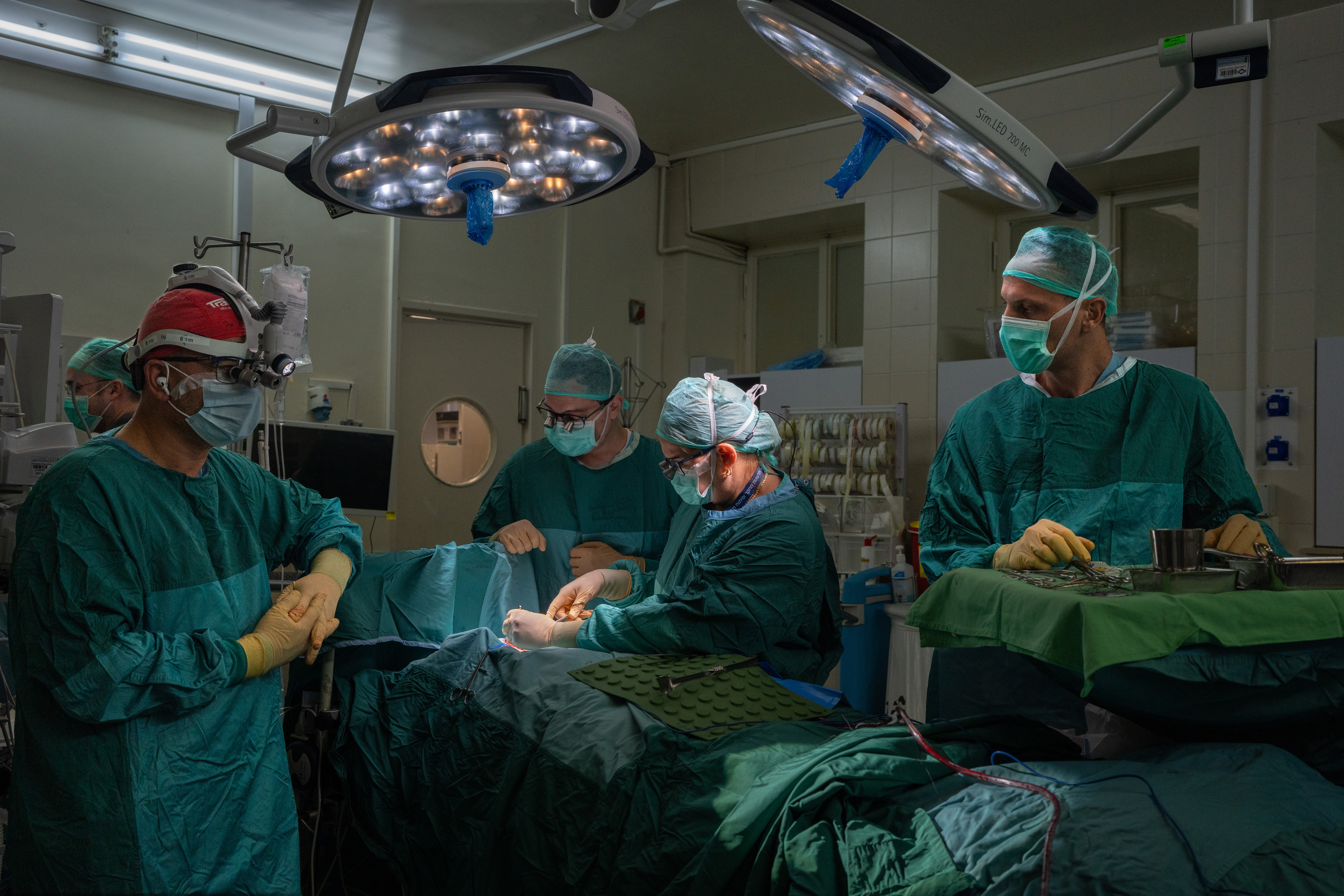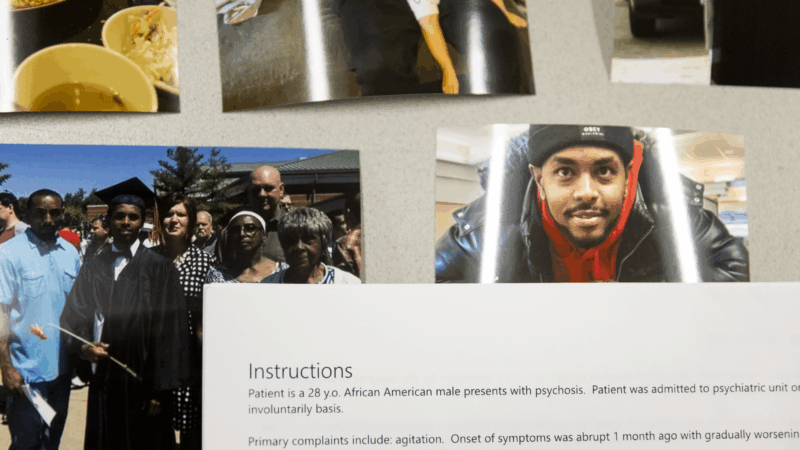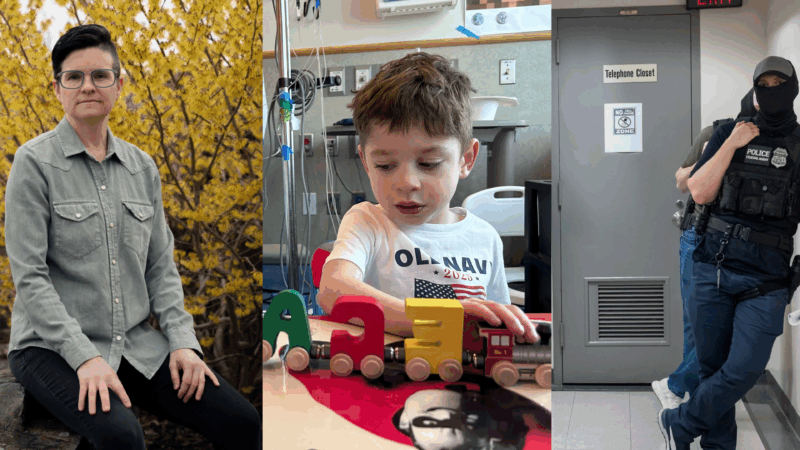Hundreds of Israeli soldiers were badly wounded in Gaza. Here’s what saved them
PETAH TIKVAH, Israel — It’s not uncommon in Israel today for a young man in his early 20s to be spotted on the streets with an amputated leg or serious wound.
More than 500 Israeli soldiers have survived serious injuries fighting in Gaza, according to the military.
Many of them endured catastrophic wounds that would have killed or maimed them in Israel’s past wars, Israeli combat medics and surgeons say.
What has saved their lives? Medical advances, like drones delivering blood units on the battlefield, and lessons surgeons have learned treating many soldiers on the operating table.
“ If it was the last war, I would have … lived all my life with one leg and one lung,” said Nevo, a 25-year-old soldier who was badly wounded in an explosion in Gaza in late 2023.

Nevo is among several dozen soldiers whose limbs were saved by an Israeli civilian surgeon who has shared her medical experience in the war with top doctors at the renowned Mayo Clinic in Minnesota.
Nevo declined to give his last name, or be identified in photographs, in line with a new Israeli military protocol against publishing the identities of soldiers who served in Gaza to protect them from potential arrest abroad for alleged war crimes.
Drones delivering blood to the battlefield, and other advances
At an Israeli military base in late 2024, young soldiers presented new technology being used to treat wounded soldiers in Gaza.
One soldier held up an Israeli-made drone, called Thor, which can drop bombs and also parachute units of blood from the sky, factoring in the wind direction, to reach wounded soldiers in Gaza.
In past combat, Israeli combat medics treated wounded soldiers with freeze-dried plasma, but the military has now developed technology to quickly deliver whole blood, stored at the right temperature, to a severely hemorrhaging soldier in the battlefield. Whole blood, rather than freeze-dried plasma, is credited by the military with saving soldiers’ lives.
A portable device newly deployed in Gaza, developed by the Israeli military with Israeli biomedical company Inovytec, separates oxygen from the air to ventilate wounded soldiers without using pressurized oxygen cylinders that are not as safe on the battlefield.
“There is a lot of new innovation,” said Dr. Todd Rasmussen, a former U.S. Air Force surgeon and expert in military medicine, now at the Mayo Clinic. “We know that getting blood into patients who have lost blood as fast as possible is good to save life and limb. That was learned during the Second World War. But delivering that blood to medics by drones? That’s very new.”
Today, physicians treating soldiers in Israel and in Ukraine are sharing their experiences with surgeons in the U.S. Rasmussen calls it the “silver lining” of war.
“A lot of these experiences and technologies or methodologies do get translated to the care of civilians,” Rasmussen said.
How one doctor saved the limbs of 35 Israeli soldiers
Rasmussen’s team at the Mayo Clinic has been in touch with Dr. Galit Sivak at Rabin Medical Center in Petah Tikva, Israel.
Sivak has been sharing the method she’s used during the Gaza war to save the limbs of 35 Israeli soldiers — including the 25-year-old soldier Nevo.

“He was badly wounded,” Sivak said from her hospital office. “He had a lung injury … he lost his teeth. And his leg was [a] really badly mangled extremity.”
The fierce nature of ground combat in the current Gaza war meant more limb injuries among soldiers compared to Israel’s last ground offensive in Gaza in 2014. One advantage wounded Israeli soldiers have benefited from is the proximity to the battlefield — evacuated from Gaza by helicopter within about an hour to the operating table of a top-notch hospital in Israel.
Sivak said she ditched the usual medical protocol of damage control when she received soldiers like Nevo, who had both a leg and lung injury.
“It’s written in the books that, leave the leg alone, and when his lungs are better, then you can deal with the leg. But the leg is not going to wait for you,” Sivak said.
Sivak also saved the limbs of several Palestinian suspects badly wounded in Gaza and detained by the Israeli military. But since the war began, Palestinian civilians in Gaza have not had access to Israel’s advanced medical system. Israel no longer permits Palestinian civilians wounded in Gaza to be treated at Israeli civilian hospitals.
The medical system in Gaza has been severely battered by Israeli bombardment. The United Nations says Gaza has the highest number of child amputees per capita in the world. Health officials in Gaza say more than 4,700 Palestinians have had limbs amputated in the nearly two years of war.

Soldiers carry scars, some invisible, for the rest of their lives
Nevo, the soldier whose leg was saved by Dr. Sivak, regularly hears the booms of Israeli bombardment in Gaza from his home on a kibbutz near the Gaza border. Sometimes his windows shake.
His leg is missing large chunks of muscle, left behind on the battlefield in Gaza from the explosion that wounded him. But thanks to his medical care, he can do his CrossFit training, he can ride a bike, and is currently traveling in Asia.
“He can do everything with the leg. Maybe it’s ugly, but it’s good,” said Sivak, his surgeon.
Still, Nevo’s mind often drifts to the moment in Gaza when Palestinian militants detonated explosives in a home, wounding him and killing two close friends in his army unit. He often thinks: Could the unit have acted differently so they’d be alive today?
“You always think about them,” Nevo said. “We think about what we did wrong, what we did right … and we learn from it. But I cannot go back.”
Like many soldiers who have served in Gaza, he now has a large tattoo on his arm with the date of his injury — another permanent reminder on his body of the moment that changed his life.
He is one of the many young soldiers carrying scars, some invisible, for the rest of their lives.

Itay Stern contributed to this story.
The 2025 pop culture yearbook, from pettiest cameo to nerdiest movie moment
Dueling Safdie brother movie projects, Love Island USA chaos, a feces-filled And Just Like That … finale: looking back on an eclectic year for pop culture.
How President Trump reshaped capitalism in 2025
His policies are picking winners and losers — and blurring the lines between business and government.
The DOGE mindset is still central to the Trump administration’s agenda as 2025 ends
The Department of Government Efficiency effort was one of the most consequential and controversial – if not entirely successful – changes the Trump administration made in 2025.
How systemic failures turn state mental hospitals into prisons
The share of people with severe mental illness in state psychiatric hospitals accused of serious crimes has risen steeply. The shift has all but halted the possibility of care before a catastrophic crisis.
Here are some of the NPR stories that had a big impact in 2025
A sampling of the stories NPR staff believe made some of the deepest ripples this year — reminders of what rigorous, compassionate journalism can do, and why the work remains as urgent as ever.
Can Americans learn to love tiny, cheap kei cars?
President Trump recently embraced kei cars, tiny vehicles that are popular in Asia but hard to get in the U.S. Kei car enthusiasts are delighted — but doubt whether much will change.









